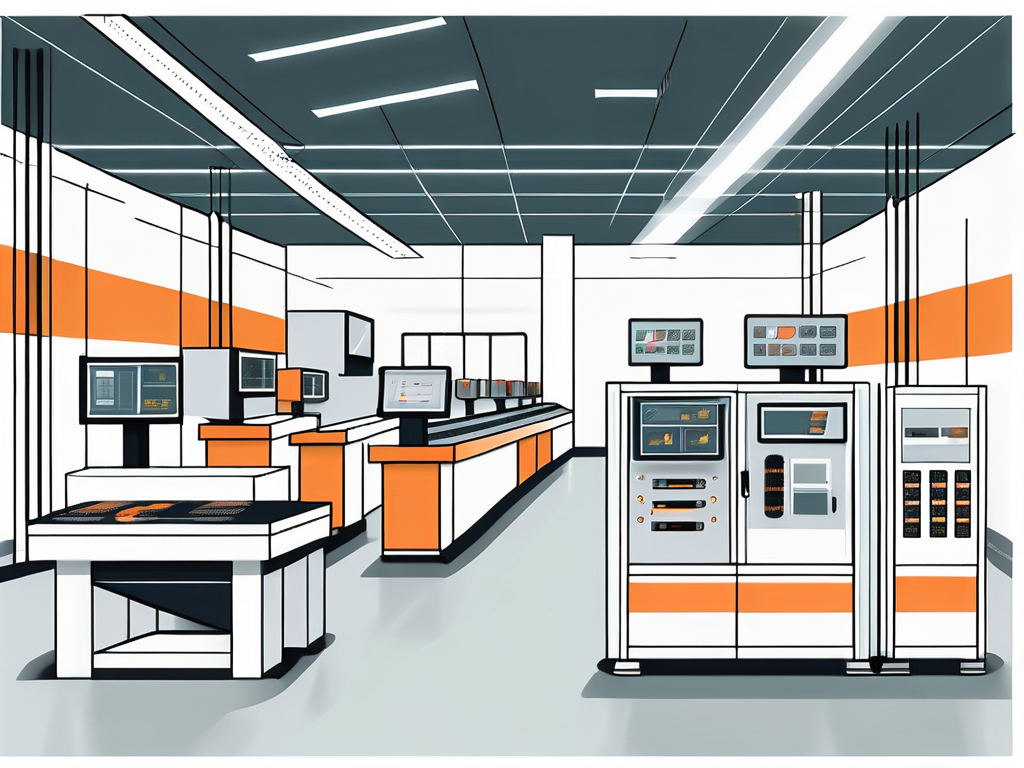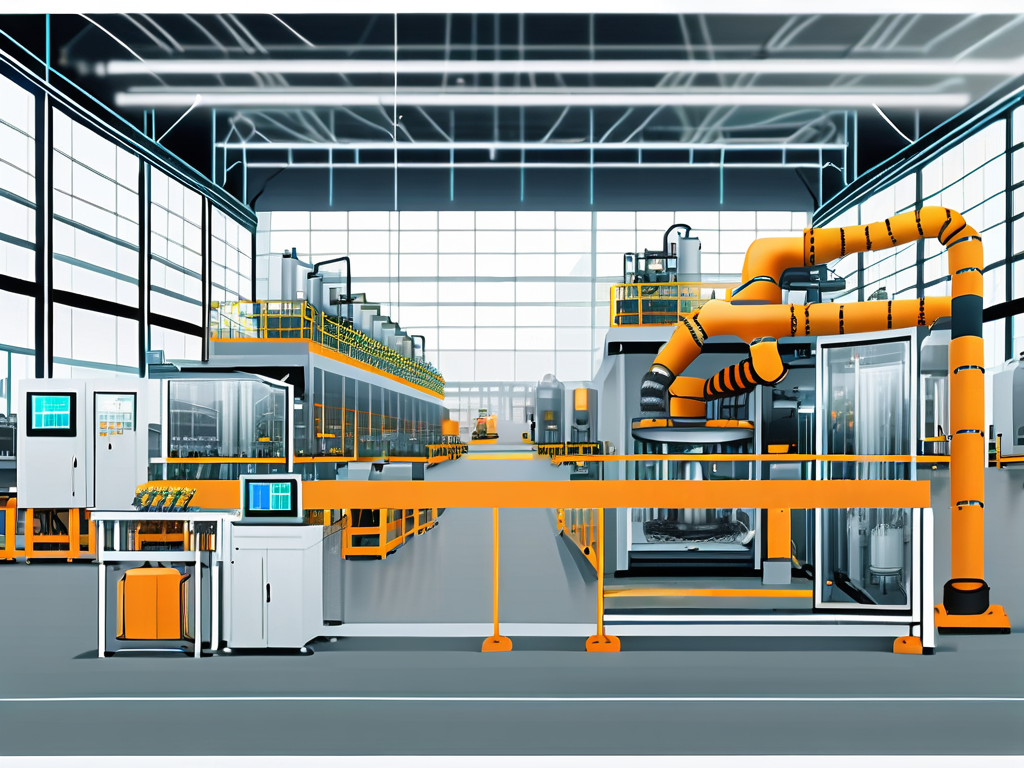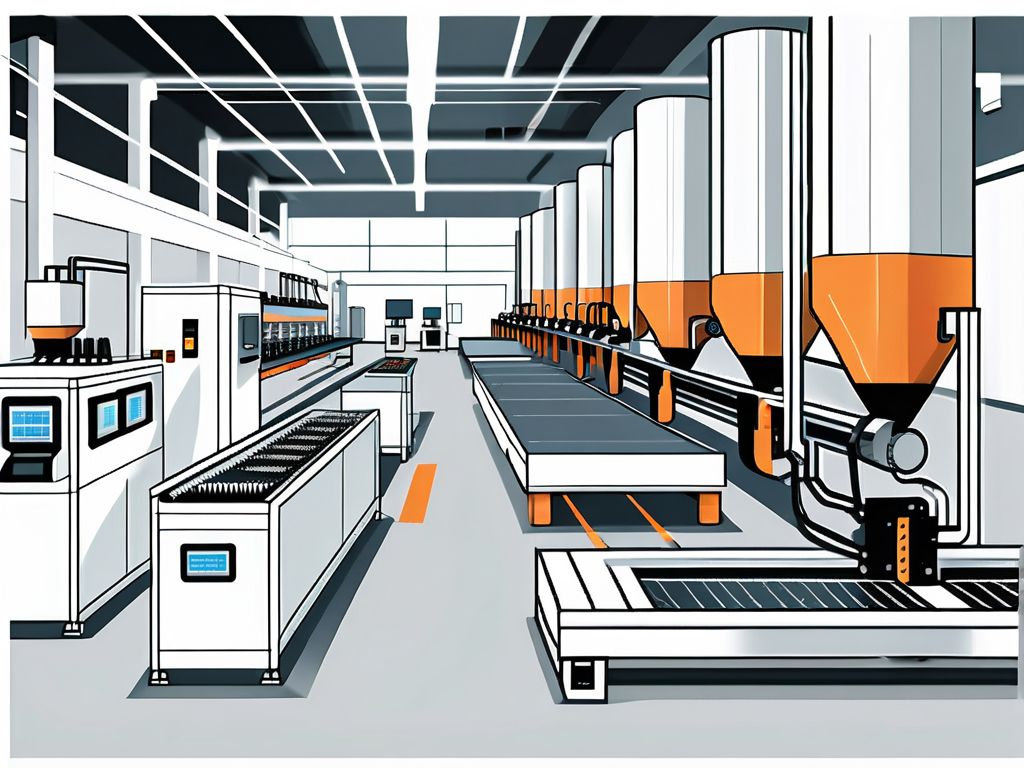In the fast-paced and competitive world of manufacturing, having effective shop floor control techniques is crucial for achieving better outcomes. Shop floor control refers to the process of managing and controlling the activities that take place on the shop floor, where the actual production happens. By implementing effective shop floor control techniques, manufacturers can improve efficiency, reduce waste, enhance quality, and ultimately satisfy their customers. In this article, we will explore the importance of shop floor control in manufacturing and delve into various techniques that can be employed for better results.
Understanding Shop Floor Control in Manufacturing
Shop floor control plays a pivotal role in the overall manufacturing process. It involves planning, coordinating, and monitoring the activities that occur on the shop floor to ensure efficient production. Essentially, it is about managing resources, such as people, machines, and materials, to optimize productivity and meet production targets. By having a well-designed shop floor control system in place, manufacturers can streamline operations and achieve desirable outcomes.
The Role of Shop Floor Control in Manufacturing
Shop floor control serves as the link between production planning and execution. It ensures that the production plan is effectively executed on the shop floor, taking into account the available resources and constraints. It provides real-time visibility into the status of production activities, enabling timely decision-making and action. By maintaining control over the shop floor, manufacturers can minimize disruptions, avoid bottlenecks, and maximize production efficiency.
Key Components of Shop Floor Control
A successful shop floor control system comprises various components that work together to achieve optimal results. These include:
- Real-time data collection and analysis: By collecting data on various parameters such as machine performance, production output, and inventory levels in real-time, manufacturers can gain valuable insights into shop floor operations. This data can be analyzed to identify areas for improvement and guide decision-making.
- Automated scheduling and dispatching: Efficient scheduling and dispatching of tasks and resources are essential for smooth shop floor operations. By automating these processes, manufacturers can ensure that the right tasks are assigned to the right resources at the right time, minimizing idle time and maximizing productivity.
- Quality control and inspection techniques: Maintaining high levels of product quality is a priority for manufacturers. Shop floor control techniques such as implementing inspection checkpoints, conducting quality audits, and adhering to standardized operating procedures can help ensure that products meet the desired quality standards.
Another important component of shop floor control is the implementation of visual management techniques. Visual management involves using visual cues, such as color-coded indicators and signage, to communicate information and instructions on the shop floor. This can include displaying production targets, highlighting safety precautions, and indicating the status of machines or workstations. By using visual management, manufacturers can enhance communication, improve efficiency, and reduce errors on the shop floor.
Furthermore, shop floor control systems often incorporate performance measurement and reporting capabilities. These systems track key performance indicators (KPIs) such as production output, machine downtime, and quality metrics. By monitoring and analyzing these KPIs, manufacturers can identify trends, measure performance against targets, and make data-driven decisions to optimize operations. Performance reports generated by the shop floor control system provide valuable insights for management and help drive continuous improvement initiatives.
In conclusion, shop floor control is a critical aspect of manufacturing operations. It enables manufacturers to effectively plan, coordinate, and monitor activities on the shop floor, ensuring efficient production and optimal resource utilization. By incorporating components such as real-time data collection, automated scheduling, quality control techniques, visual management, and performance measurement, manufacturers can achieve higher productivity, improved product quality, and better decision-making.
Exploring Different Shop Floor Control Techniques
When it comes to shop floor control, there are several techniques that manufacturers can utilize to improve operations and achieve better outcomes. Let’s delve into some of these techniques:
Shop floor control is a critical aspect of manufacturing operations, where efficiency and productivity play a key role in the success of a business. By implementing innovative techniques and strategies, manufacturers can streamline their processes and enhance overall performance.
Real-Time Data Collection and Analysis
Collecting and analyzing real-time data from the shop floor can provide manufacturers with valuable insights into their operations. By implementing automated data collection systems, manufacturers can monitor key performance indicators (KPIs), identify bottlenecks in production processes, and make data-driven decisions to optimize efficiency.
Real-time data collection allows for immediate visibility into production metrics, enabling quick adjustments to be made to enhance productivity. By leveraging advanced analytics tools, manufacturers can gain a deeper understanding of trends and patterns within their operations, leading to more informed decision-making.
Automated Scheduling and Dispatching
Efficient scheduling and dispatching of tasks and resources are crucial for maximizing productivity. By implementing automated scheduling and dispatching systems, manufacturers can minimize idle time, optimize resource allocation, and ensure that production targets are met in a timely manner.
Automation in scheduling and dispatching not only improves operational efficiency but also reduces the likelihood of human errors. By utilizing algorithms and machine learning algorithms, manufacturers can create optimized schedules that take into account various factors such as machine availability, worker skills, and production priorities.
Quality Control and Inspection Techniques
Ensuring high product quality is essential for customer satisfaction and maintaining a strong reputation. By implementing rigorous quality control and inspection techniques, such as statistical process control (SPC) and Six Sigma methodologies, manufacturers can identify and address defects or issues in real-time, reducing the likelihood of defective products reaching the customer.
Quality control and inspection techniques not only focus on identifying defects but also on preventing them from occurring in the first place. By establishing robust quality management systems and conducting regular audits, manufacturers can continuously improve their processes and deliver products that meet or exceed customer expectations.
The Impact of Effective Shop Floor Control on Manufacturing Outcomes
Implementing effective shop floor control techniques can have a significant impact on various aspects of manufacturing outcomes. Let’s explore some of the key benefits:
Improving Efficiency and Productivity
By optimizing resource allocation and minimizing idle time, effective shop floor control techniques can improve overall efficiency and productivity. This leads to faster production cycles, reduced lead times, and increased output, ultimately resulting in improved customer satisfaction.
Moreover, enhanced efficiency and productivity can also lead to a more streamlined workflow on the shop floor. With tasks being completed in a timely manner and resources being utilized effectively, employees can work more cohesively as a team, fostering a positive work environment and boosting morale.
Reducing Waste and Downtime
Efficient shop floor control helps to identify and eliminate sources of waste, such as overproduction, excess inventory, and unnecessary motion. By minimizing waste and reducing downtime, manufacturers can increase overall operational effectiveness and reduce costs.
In addition to reducing waste, effective shop floor control can also contribute to a more sustainable manufacturing process. By optimizing resource usage and minimizing environmental impact, companies can align their operations with eco-friendly practices, appealing to environmentally conscious consumers.
Enhancing Quality and Customer Satisfaction
Effective shop floor control techniques, including quality control and inspection, contribute to manufacturing high-quality products. By ensuring consistent quality, manufacturers can build customer trust, increase customer satisfaction, and foster long-term relationships.
Furthermore, a focus on quality control can also result in fewer product defects and returns, ultimately saving the company both time and money. By delivering products that meet or exceed customer expectations, businesses can establish a reputation for reliability and excellence in their respective industries.
Implementing Shop Floor Control Techniques
Implementing shop floor control techniques requires careful planning and execution. Let’s explore the necessary steps:
Assessing Your Current Shop Floor Control System
Before implementing any new techniques, it is essential to assess your current shop floor control system. Evaluate its strengths and weaknesses, identify areas that require improvement, and determine the specific outcomes you wish to achieve. This assessment will provide a baseline for implementing appropriate shop floor control techniques.
For example, during the assessment, you may discover that your current system lacks real-time data collection capabilities. This limitation can lead to delays in decision-making and hinder overall productivity. By identifying this weakness, you can focus on implementing a shop floor control technique that incorporates advanced data collection methods, such as IoT sensors, to provide real-time insights into production processes.
Selecting the Right Techniques for Your Needs
Once you have identified the areas that require improvement, research and evaluate various shop floor control techniques that are relevant to your needs. Consider factors such as your specific industry, production processes, and available resources. Select the techniques that align with your goals and are feasible to implement within your organization.
For instance, if your organization operates in a highly regulated industry, such as pharmaceutical manufacturing, you may need to prioritize techniques that ensure compliance with strict quality standards. This could involve implementing shop floor control techniques that incorporate automated quality checks, real-time monitoring of critical parameters, and traceability systems to track and document every step of the production process.
Training Staff and Monitoring Progress
Implementing new shop floor control techniques requires training your staff to ensure they can effectively utilize the new systems and processes. Provide comprehensive training programs to familiarize employees with the new techniques and their roles and responsibilities.
During the training process, it is crucial to emphasize the benefits that the new techniques will bring to both the organization and individual employees. This will help create buy-in and enthusiasm among the staff, increasing the likelihood of successful implementation and adoption.
Additionally, establish a system for monitoring and measuring the progress of the implemented techniques to ensure they are delivering the desired outcomes. Regularly review key performance indicators (KPIs) such as production efficiency, quality metrics, and customer satisfaction to gauge the effectiveness of the new shop floor control techniques.
By monitoring progress, you can identify any areas that require further improvement or adjustment. This continuous improvement approach will enable your organization to refine and optimize the implemented techniques, ultimately leading to better manufacturing outcomes.
Effective shop floor control techniques are critical for achieving better manufacturing outcomes. By understanding the importance of shop floor control, exploring various techniques, and implementing them strategically, manufacturers can optimize efficiency, reduce waste, enhance quality, and ultimately satisfy their customers.







